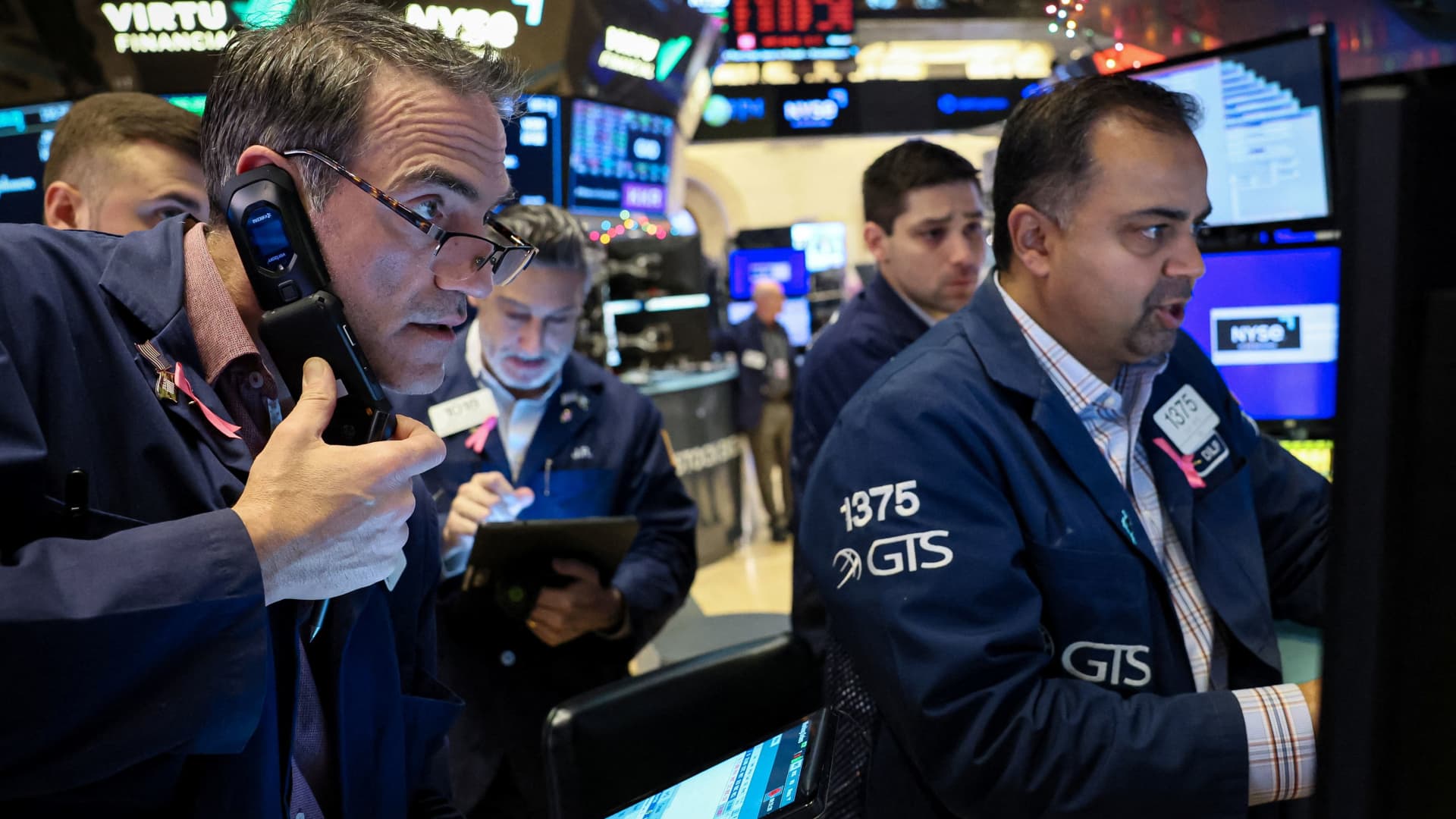
What little suspense is left in the year revolves around whether the S & P 500 can close at a historic high. The last record close was set on Jan. 3, 2022, when the index closed at 4,796.56. The benchmark closed Thursday at 4,783.35, just shy of that record. We’ll see if it can hit the new high market today. Closing the year at a historic high is a fairly rare event — it’s only happened eight times since 1926, and only four times since 1963, according to S & P Global: 2020, 2013, 1999, 1991, 1963, 1958, 1954, 1928. Santa Claus rally on target As we head into the final trading day of the year, the Santa Claus rally — which takes place during the last five trading days of the old year and the first two of the new one — is intact. So far, the S & P is up 0.9% in these first four of the seven days. The average Santa rally gain is 1.3% , so right on target so far. Interesting new highs The consumer seems to be doing well, with credit card stocks reaching new highs: Mastercard , Capital One , and American Express . Credit card balances are also at record highs. Some industrials have also made new highs: Caterpillar , Ingersoll Rand , Eaton , Parker-Hannifin , Union Pacific and General Electric . This comes as artificial intelligence reaches some industrials. Ingersoll Rand is the world’s second largest industrial compressor manufacturer, often mentioned as a strong candidate for global re-shoring trends and increased investing in automation. Eaton does power management at big industrial factories, so automation and the use of more “smart devices” is going to require very sophisticated power management solutions. The problem with stocks: expensive and overbought What a difference a year makes. The S & P internals are almost the opposite of where they were a year ago. S & P 500: overbought and expensive: Relative Strength Indicator (RSI): 72 (overbought) % stocks over 50-day- moving average: 89% (high, overbought) Forward earnings P/E: 19.6 (expensive) Earnings growth: 11% (high) Markets are positioned very bullish. That’s why the “pain trade” (the trade that would cause the greatest discomfort to the most traders) is for the markets to have a hiccup in January. Upcoming catalysts: jobs and inflation: FOMC minutes: Jan 3 Jobs report: Dec. 5 Euro zone CPI: Jan. 5 US CPI: Jan 11 Earnings season: Jan 12 2024 earnings/revenue themes Watch revenues: Nike , FedEx , General Mills , Wayfair , CarMax , Paychex all reported revenue below expectations. There is also a potential downside to the “soft landing:” demand concerns, disinflation and lower volumes. Expect a lot of companies to emphasize cost control in 2024. Stop complaining about the Magnificent 7: a few stocks historically generate the majority of returns Finally, my favorite academic study of the year, which I reported on in August : The paper, “Long-Term Shareholder Returns: Evidence from 64,000 Global Stocks,” by Hendrik Bessembinder and three other authors, looked at the performance of roughly 64,000 publicly traded common stocks worldwide between 1990 and 2020. Of those, 17,776 were stocks that traded in the United States. The paper was published through the CFA Institute’s Financial Analysts Journal. Their conclusion: 2.4% of the U.S. firms generated all net stock market wealth created between 1990 and 2020. And just 1.4% of global stocks generated all the returns. It’s always been a creative destruction game, folks. A few disruptors come in and make big money. That’s why indexing has won out.
